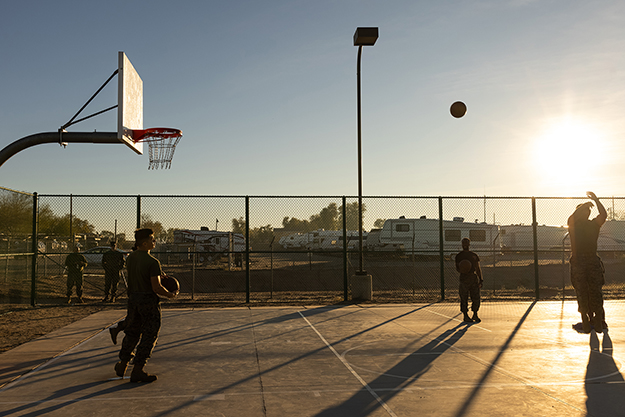The Defense Department released a new strategy recently aimed at ensuring the U.S. military installations throughout the world support the quality-of-life needs of service members, military families and the civilian workforce well into the future.
The DOD Strategy for Resilient and Healthy Defense Communities sets forth the department's commitment to fulfilling what defense leaders say is a national security imperative and moral obligation to provide the total force with healthy, safe, functional and resilient environments in which to live and work.
Brendan Owens, assistant secretary of defense for energy, installations and environment, said the key to enhancing military readiness is putting the quality of life of those who serve front and center.
"People are our most important asset. When you look at what the strategy is after, what's at its core is making sure our readiness is enhanced by the infrastructure on our installations," Owens said during a briefing on the strategy at the Pentagon Feb. 16.
The strategy puts forward an end state focused on quality of life and readiness for the total force where:
- People living and working on DOD installations thrive as part of happy, healthy, productive and resilient communities.
- The built and natural environment around them meets operational needs and improves their quality of life.
- Installation managers and senior DOD leadership have a common operating picture of the quality of infrastructure to guide timely decisions and resource allocations.
- Installations are integrated with surrounding communities, providing public services and lifestyle-oriented features that build the readiness and resiliency of the Total Force.
Owens, who also serves as the Defense Department's chief sustainability officer, said the blueprint represents a whole-of-department approach for making future investments in installations that put people and mission first.
"It's not about how much we build, it's about what we build and how we center people and center the mission of what those people are trying to deliver in everything that we do."
Defense officials acknowledge that the strategy plots an ambitious course forward.
The DOD infrastructure footprint includes 538 installations throughout all 50 states and Washington D.C., two U.S. territories and 25 foreign countries.
The department maintains 667,760 total physical assets including 250,000 homes and one million permanent and rotational beds; operational structures such as hangers, shipyards and offices; and other support facilities such as schools, hospitals, community centers and commissaries.
DOD also manages 26 million acres of land and open spaces on military installations including outdoor recreation spaces, parks, waterways and protected areas across its portfolio.
More than 79% of DOD installations were established before 1970, and nearly 33% of the department's buildings are more than 50 years old.
"These assets reflect the needs of the time they were constructed, requiring not just regular upkeep, but potentially significant upgrades or outright replacements to meet evolving requirements and preferences," officials note in the strategy.
Over the past five years, DOD has invested $11.4 billion per year on average to build facilities, $15.4 billion per year to maintain and repair current infrastructure.
Despite those investments, the estimated deferred maintenance backlog on the department's infrastructure stands at $134 billion.
Those challenges are compounded, officials note in the strategy, by an unsustainable increase in severe weather incidents such as hurricanes, floods and wildfires that require further investments for recovery.
In order to bridge the gap between the current conditions and the quality standards that service members, and their families expect and deserve, the strategy directs DOD decision makers to:
- Adopt human-centered requirements to maximize the benefit of future investments.
- Optimize the department's total footprint to align with future needs.
- Transform how the department manages its portfolio by adopting a strategy to improve the performance of its facilities to become more financially sustainable.
Concurrent with the release of the strategy, Owens said the department is looking ways to ensure that repairs in existing facilities and investments in new infrastructure center on environmental quality and quality of life for service members and their families.
He said the department is also focused intently on improving unaccompanied service member housing on its installations.
"We are centering everything that we're doing around making sure that we are understanding what the soldiers, sailors, airmen, Marines and guardians need out of their facilities in order to make sure that the version of themselves that shows up to work the next day, after spending a night in a barracks or the dorms, is the most effective, efficient, and resilient they can be," Owens said.
Secretary of Defense Lloyd J. Austin III has prioritized efforts to strengthen support for Defense Department personnel and family members as a critical component of ensuring the military recruits and retains a healthy and ready military force to meet the objectives laid out in the 2022 National Defense Strategy.
In her memo accompanying the release of this latest strategy, Deputy Secretary of Defense Kathleen Hicks emphasized that DOD installations are key to shaping service members and their families' experience.
"Ensuring that these spaces are safe; appealing to current and prospective service members, their families, and the civilian workforce; and supportive of their physical, emotional and cognitive well-being is therefore a national security imperative," Hicks wrote. "It is also our moral obligation to the people who defend our nation."





Read Comments